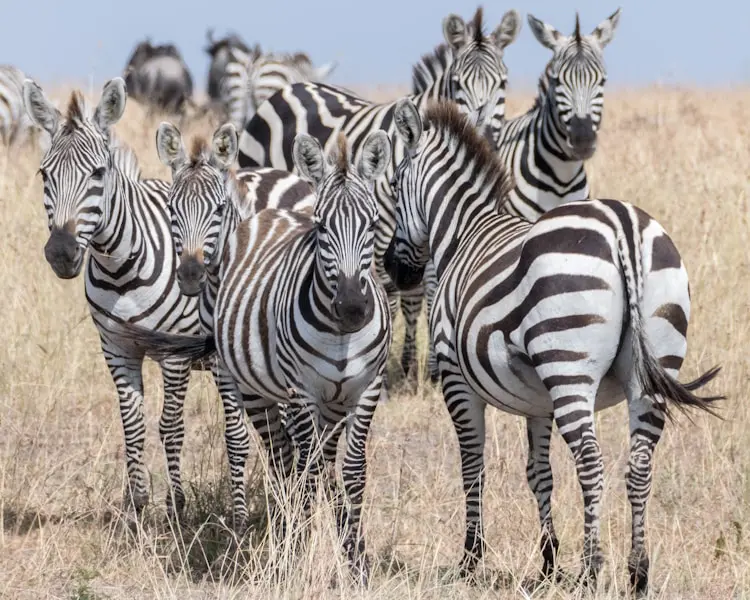
Zebras, mammals from the horse family, have a unique coloration that makes them easily distinguishable from any other animals. A team of scientists from the University of Bristol has discovered that the characteristic black-and-white camouflage helps zebras repel pesky flies. The team leader, Professor Tim Caro, has been seeking answers to this question for over 20 years. To find out, he invited his colleagues to participate in an intriguing experiment where farm horses played the role of zebras. The researchers dressed the horses in coats with various patterns, including contrasting black-and-white stripes. It turned out that this particular design attracted the fewest blood-sucking insects, as reported by the Daily Mail. Interestingly, only female flies feed on the blood of mammals, as it contains the nutrients necessary for the development of their fertilized eggs, while males consume nectar and pollen from plants.
Natural selection favored the zebra’s coloration. Regardless of whether they are plains, desert, or mountain zebras, they all share one common feature: black-and-white stripes on their fur. According to the British researchers, the phenomenon of zebra coloration has intrigued science for the past century and a half. During this time, scientists have proposed various hypotheses. Some suggested that the unique pattern helps zebras see other zebras in the dark. Others insisted that it protects these mammals from predators by blinding them. There were also theories about camouflage or regulating the animals’ body temperature through stripes. The Bristol team claims they have finally established the truth. Most likely, the zebra’s fur design evolved in response to the need to repel annoying flies.
The researchers draped the horses in woolen fabrics with a variety of prints. One blanket was completely gray. The scientists recorded how flies reacted to different patterns. It turned out that gray wool attracted the most flies, while the black-and-white contrasting pattern was not popular among the bloodsucking insects. Now, the team plans to conduct further research. They want to understand why natural selection led to this pattern appearing specifically in zebras while other animals were overlooked. According to Tim Caro and his colleagues, this is important for the future of livestock development, especially considering that flies are carriers of serious diseases, including fatal ones.
